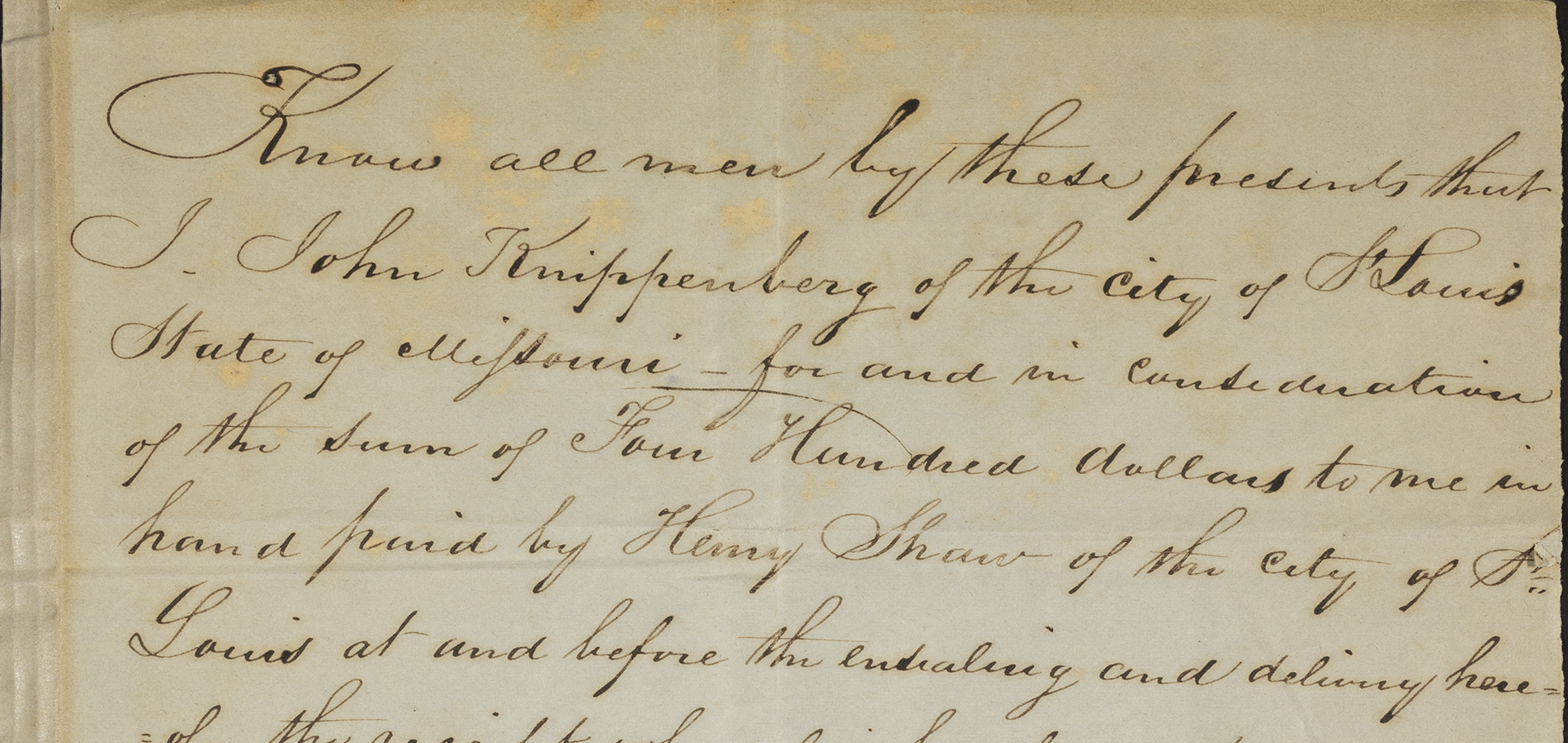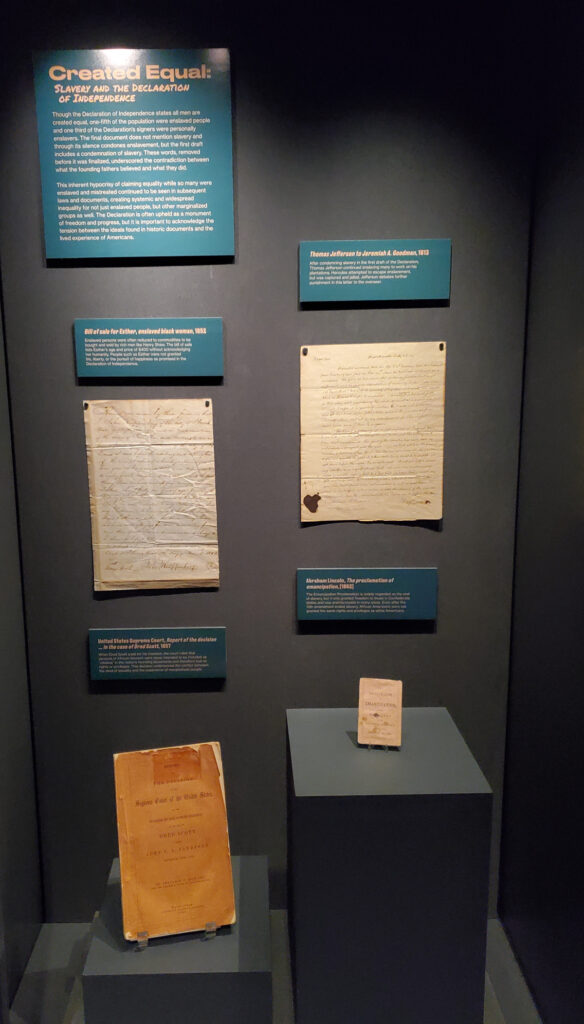
Created Equal: Slavery and the Declaration of Independence
Though the Declaration of Independence states all men are created equal, one-fifth of the population were enslaved people, and one-third of the Declaration’s signers were personally enslavers. The final document does not mention slavery and, through its silence, condones enslavement, but the first draft includes a condemnation of slavery. These words, removed before it was finalized, underscored the contradiction between the founding fathers’ beliefs and actions.
For decades, the inherent hypocrisy of claiming equality while so many were enslaved and mistreated continued to appear in subsequent laws and documents. This so-called equality created systemic and widespread inequality for enslaved people and other marginalized groups.
We uphold the Declaration as a monument of freedom and progress; it is crucial, however, to acknowledge the tension between the ideals found in historical documents and the lived experience of Americans. The Created Equal exhibition looks at historical documents like the Declaration of Independence to elaborate on the narratives told by and with them.
This exhibition was organized by the Curator of the Rare Book Collection, Cassie Brand. Exhibitions showcased in the Declaration of Independence Case are open during the same hours as the Declaration of Independence exhibition. See the Declaration of Independence page for more on the Created Equal exhibition and the Southwick Broadside.

